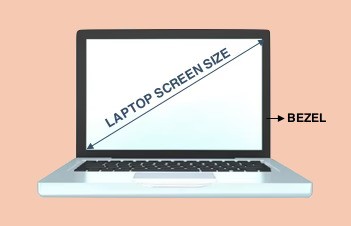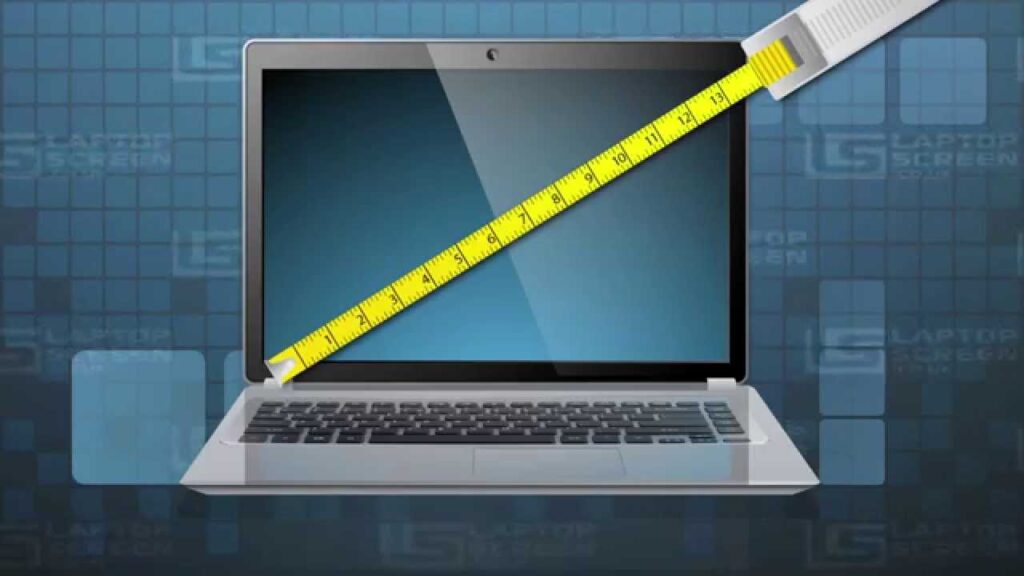Are you fed up with the struggle to know how to find screen size of laptop? Look no farther than here! This is an inclusive guide that will take you through the necessary steps that will enable you exactly determine the overall size of your device’s screen. You need this guide if you require a case for your laptop, want to have a compatible monitor or simply when idle.
Using our step-by-step instructions, you can measure your screen accurately and without having to guess at all. We are also going to share some insights on common brands of laptops like [brand name] so that we are sure you have all that information with you.
Knowing how big one’s laptop display is important for several factors. The right dimensions will help in identifying appropriate peripherals as well as guaranteeing perfect fit. Do not waste anymore time wondering whether it fits – allow us show you how.
Whether or not you are techy geek or uninvolved PC operator just come along with us and get this best guide for telling what screen size does my laptop has. Let’s unlock convenience and accuracy now!
Measuring laptop screen sizes

In order to know how to find screen size of laptop, it is important to understand the various measurements that are involved. There are two terms you need to know: screen size and display size.
Screen size talks about the physical dimensions of the screen itself, usually measured in inches diagonally from one corner to the opposite corner. It indicates how large the laptop is as a whole and it helps determine which accessories like cases or screen protectors would be suitable for such laptops.
On the other hand, display size refers to this space within which content can be displayed on the screen. This is smaller than the actual dimensions of a monitor because of its bezels displaying. Display measurement determines how good an image on a computer looks or how much space you have got at your disposal onscreen.
What are the typical sizes and resolutions of laptop screens?
Different laptops come with varying screen sizes and resolutions which have their own pros and cons. Some of the most common screen sizes start from 13 inches to 17 inches although some laptops go beyond 17 inches for people who want bigger displays. But at the same time, there are also small laptops that have screen sizes of about 11 inch available today simply because they tend to be portable.
As far as resolutions are concerned, modern-day laptops would typically offer Full HD (1920×1080) or higher resolution screens. While full HD gives a clear and sharp display, other resolutions such as Quad HD (2560×1440) or 4K Ultra HD (3840×2160) can increase attention to details further. Choosing a resolution is dictated by your specific purposes like gaming, designing graphics or just an entertainment device.
How to find screen size of laptop
Now that you know what is involved in measuring a laptop’s screen let us look at how one can practically do it. There are several ways depending on individual preference and availability of tools.
Manually measuring the laptop screen

The easiest way to accomplish this is by measuring the screen diagonally from one corner to the other. Begin at the top left part of your screen and drag your tape across to the right bottom of it following the curve that comes with it. Keep note of the measurement in inches and there you have your computer screens size!
Tools and methods you can use for measuring laptop screen sizes
There are also more advanced tools that can be used in calculating laptops’ screen sizes if preferred. These tools usually use sensors on laptops, which enable them to give accurate measurements without having to use any physical equipment.
Using an online screen size calculator. Typically, these calculators will request for aspect ratio and resolution of your laptop, after which they determine its actual domain size for you. The method is ideal especially when one knows his/ her laptop’s aspect ratio and resolution but has no physical measuring gadgets around.
How to Determine the Size of Your Laptop Screen without Taking Measurements
There are times you do not have a tape and still want an answer to “how to find screen size of laptop?” You will find the size of your screen while exploring laptop specifications on the website. At the same time, there could be other useful details about your monitor.
All information related to your laptop can be seen on the specification page for your device. Just open up specifications and scroll down to see “Display” or “Screen” or whatever it may say. It will have sizes in inches under that heading. If unsure, just search online using your laptop’s model number so as to know its exact size.
To find out your laptop’s model number, follow these steps:
- 1. Press Windows key at once press “R” on your keyboard this will bring Run dialog box.
- 2. Type msinfo32 into Run dialog box and hit Enter.
- 3. On that page that opens look for System Model name

Laptop Screen Measurements in Windows 10
On Windows 10, you can always check out the settings panel to know how to find screen size of laptop and what other information is there.
Just go to Start > Settings > System > Display. Then, click Advanced display settings, where you will find information including monitor resolution, color format, video card model and screen size. Nevertheless this option does not work for all laptops as the same information could differ from one brand of a laptop to another.
Read Also: How to make Windows 10 Full Screen with Keyboard
8 Best Ways to Fix Black Line on Laptop Screen HP
Things to consider when choosing a laptop screen size
It depends on individual needs and preferences for the right laptop screen size. Here are a few factors to keep in mind while deciding this will help you find out the most ideal screen size for your purpose.
Firstly, what is the portability? A smaller size of about 13 or 14 inches may be better if you want to move with your laptop often. These laptops are light in weight and too easy to carry therefore making them perfect for those students or business people who travel around many places. On the contrary, if you usually use it at one place then bigger screens sizes might be best.
Secondly, what do you intend using your laptop for? If web browsing, email and basic productivity tasks dominate your usage then 15 and 17 inches standard screens should suffice. However, as a gamer or graphic designer or video editor maybe a larger screen having higher resolutions is necessary so that you can get more from that stuff.
And lastly, you should consider the budget. Generally, in most cases, larger screens with higher resolution come with a bigger price tag. In case you are on a tight budget, then you may have to compromise on the screen size and put more focus on other things such as their features or specifications that mean much more to you.
Different benefits of laptop screen sizes
The various sizes of laptop screens are convenient for different purposes. Let us delve into some of these advantages to help you make an informed choice.
Smaller-sized laptops such as 13 or 14 inches are highly portable and lightweight. They can be carried around easily by someone who travels often and requires one that can fit in a backpack or briefcase with ease. Additionally, smaller laptops consume less energy thus having longer battery life.
Medium sized screens of about 15 or 17 inches provide a balance between portability and the amount of space on the screen. Such laptops can perform quite a wide range of tasks from just casually browsing web pages up to doing work meant for productivity. Mostly they offer mid-point performance and weight which makes them widely preferred by general users.
Users who are more interested in a larger display for multimedia or gaming purposes prefer laptop screens bigger than 17 inches. At the same time, this makes the laptop provide highly immersive experience thus enabling you appreciate visual details in movies, games and graphic design work. However, it is important to state that big laptops can be heavy and less portable.
Tips on how to optimize your laptop’s screen size
When you establish the right dimensions of your laptop’s screen, there are various tricks and tips that can help improve your viewing experience.
Firstly, modify the display scaling settings. In most cases operating systems enables users to change text sizes and other items appearing on their screens. Explore diverse scaling options to identify one that suits you best in terms of vision and preferences; increasing scaling can make texts and icons become large while reducing allows for more content to fit on your screen.
Secondly, think about using external monitors. For instance when one needs larger display for some tasks or desires more screen real estate they connect their computers with an external monitor which dramatically improves productivity and visual experience as well Several laptops support multiple monitors therefore allowing users to extend their desktop across several screens.
Lastly, don’t forget screen protection. Once you have identified your laptop screen size, look for a screen protector or case that will prevent scratches and damage. To get the right fit, select accessories that are specifically made for your laptop model and screen size.
Conclusion
Screen size determination for a laptop does not have to be difficult. With this ultimate guide, you have been provided with information and tools to enable you how to find screen size of laptop accurately. The knowledge of its significance is essential in any scenario whether it is buying peripherals like a mouse pad or selecting a new machine or even just knowing out of curiosity alone.
Differentiate screen size from display size, portability and operating requirements also the budget should be considered when selecting a desired screen. Optimize your view by adjusting display scaling settings on the computer, using external screens or putting a glass protector to the screen. This is how you will know what size of laptop screen you have, and be able to surf through the sea of available laptops with confidence that your accessories will fit right in place. Leave doubts aside and enjoy the certainty of counting one’s laptop’s screen dimensions among other precision and hassle-free benefits associated with this.

